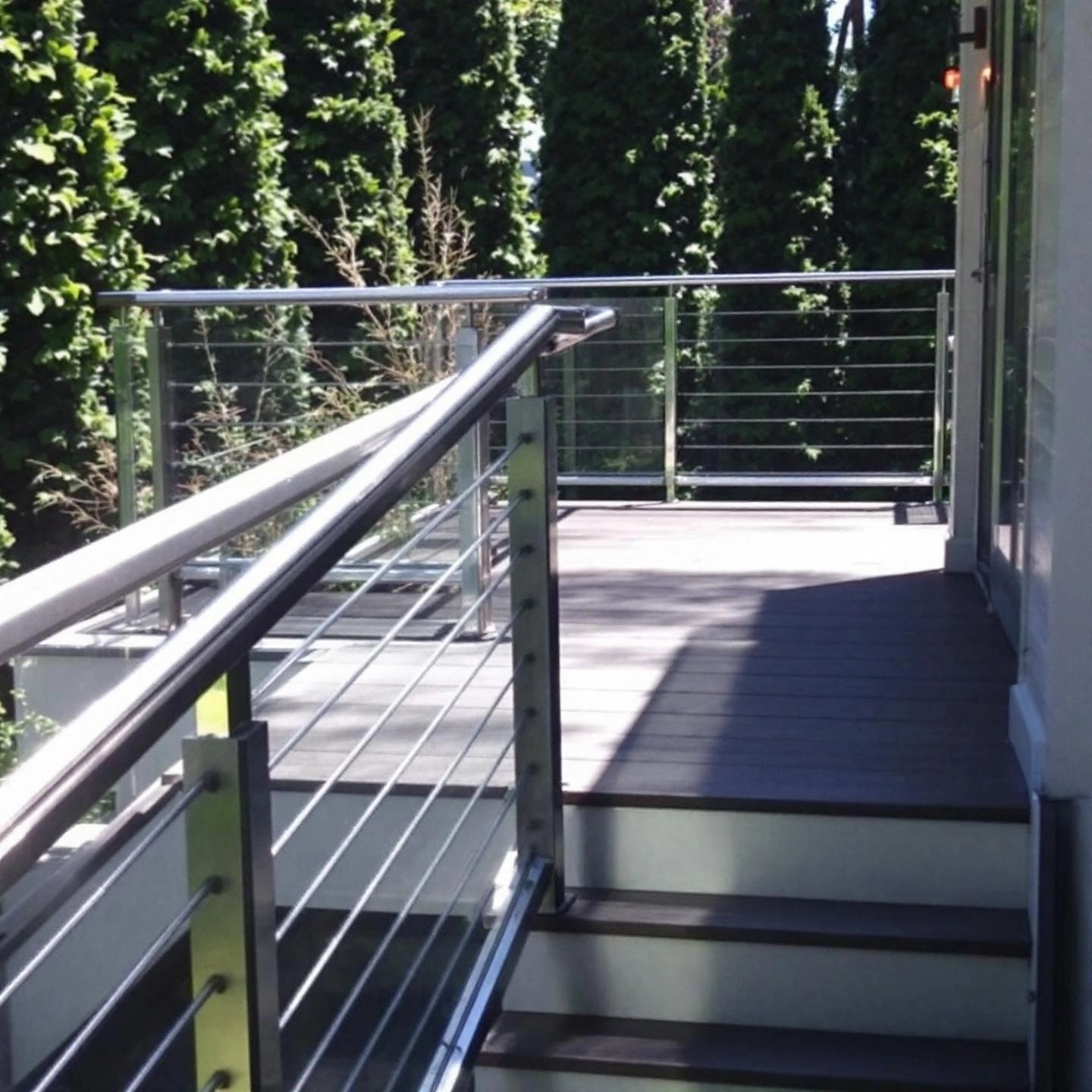
When you imagine a safe and stylish deck, what’s the first thing you notice? Chances are, it’s the railing—and more specifically, the slender bars that run between the posts. These are called aluminum deck balusters, and they’re quickly becoming the go-to choice for homeowners, contractors, and designers looking to elevate their outdoor spaces.
So, what exactly are aluminum deck balusters? Simply put, they’re the vertical or horizontal elements that fill the space between your deck’s top and bottom rails. Their primary job is to keep people safe by preventing falls, but you’ll notice they also play a huge role in defining the overall look of your deck. In modern deck railing systems, aluminum balusters are prized for their clean lines and contemporary appeal, making them a standout feature in today’s outdoor living trends.
Why are these balusters gaining so much popularity? Let’s break it down:
Comparing aluminum balusters to traditional wood options, the differences are clear:
As outdoor living spaces continue to evolve, homeowners are seeking solutions that combine beauty, safety, and durability. Aluminum deck balusters deliver on all fronts, making them a smart investment for anyone upgrading or building a deck. In the chapters ahead, you’ll discover everything you need to know about choosing, styling, and installing these modern deck railing components—so you can create an outdoor space that’s as safe as it is stunning.
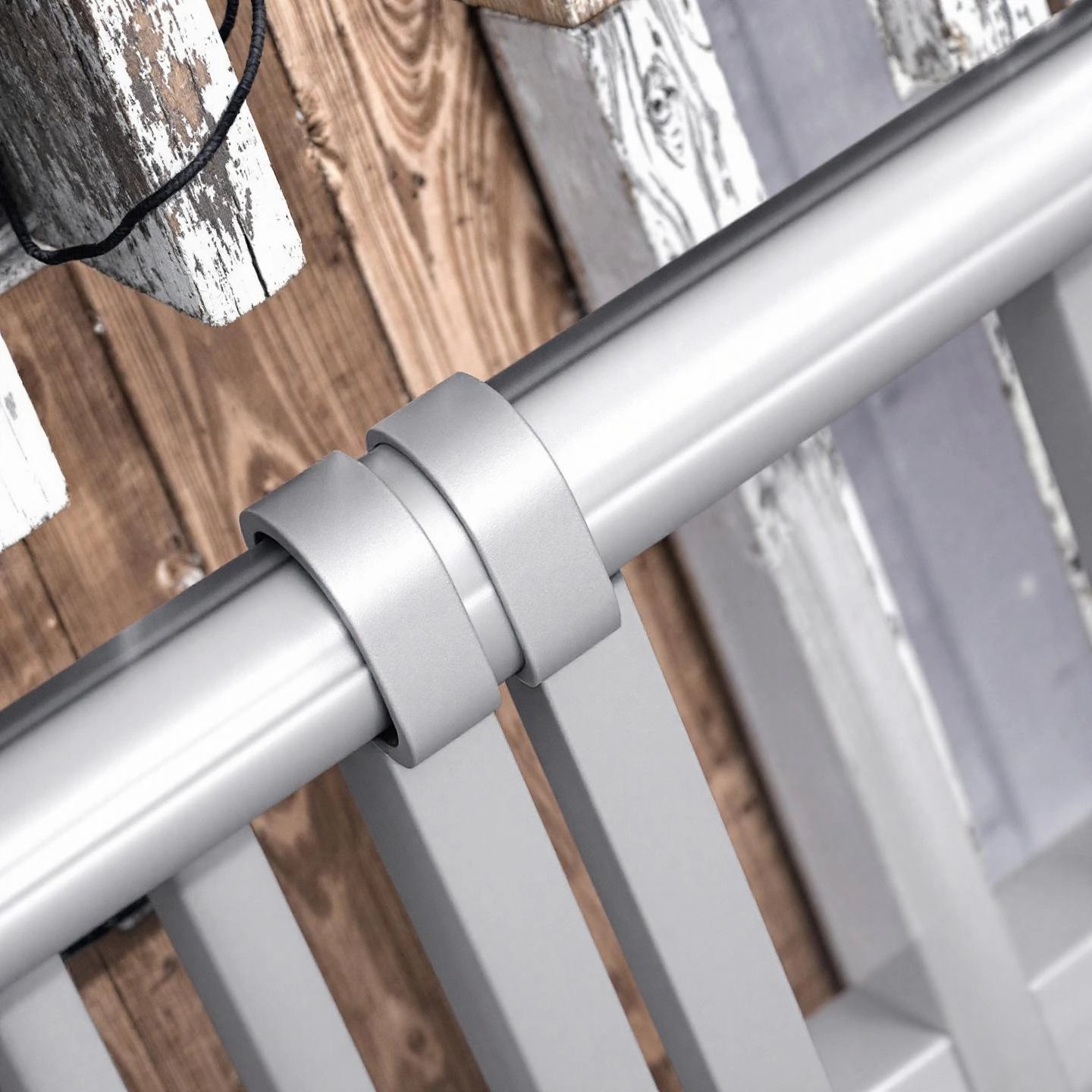
When you’re weighing your options for deck upgrades, it’s easy to get lost in a sea of materials. Wood, composite, steel, and aluminum each have their own appeal. But what makes aluminum stand out for modern deck balusters? Let’s break down the aluminum deck balusters pros and cons so you can make a confident, informed decision that fits your lifestyle and your deck’s needs.
Imagine a deck railing that looks sharp year after year, shrugs off the worst weather, and never demands a weekend of sanding or staining. That’s the promise of aluminum. Here are the core benefits of aluminum railing systems and balusters:
| Feature | Aluminum | Wood | Composite |
|---|---|---|---|
| Durability | 20+ years, resists rust & decay | Prone to rot, warping, and insects | Long-lasting, but may fade or stain over time |
| Maintenance | Minimal—just soap and water | Requires regular staining/painting | Low, but may need cleaning to avoid stains |
| Installation | Lightweight, easy for DIY | Heavier, can be labor-intensive | Heavier, may need extra support |
| Style Options | Wide range, including custom colors | Classic look, limited by wood species | Many colors/textures, mimics wood |
| Eco-Friendliness | 100% recyclable | Biodegradable, but uses trees | Varies (mix of wood/plastic) |
| Upfront Cost | Higher than wood, lower than composite | Lowest | Highest |
In short, aluminum deck balusters deliver a powerful combination of durability, style, and low maintenance that’s hard to match. If you’re looking for a railing solution that will stand the test of time with minimal effort, aluminum is a smart, future-proof investment. Next, let’s explore the wide range of styles and finishes available—so you can find the perfect match for your deck’s unique personality.
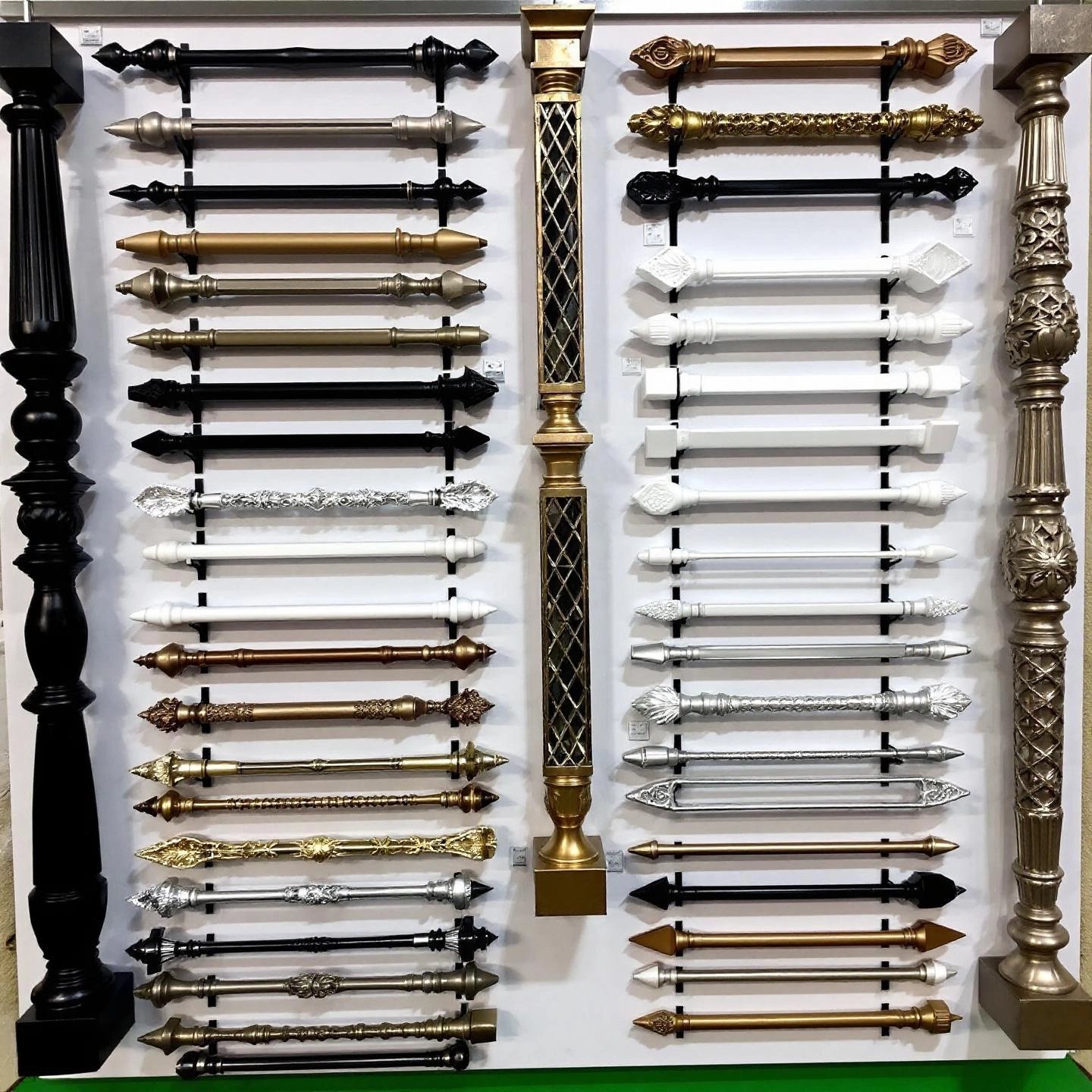
When you picture your dream deck, do you imagine crisp lines, bold accents, or perhaps a touch of classic charm? The style and color of your aluminum deck balusters play a huge role in defining your outdoor space. With so many options available, how do you choose the right look to match your vision—and ensure it coordinates seamlessly with your deck's other features?
Sounds complex? Let’s break it down. Most aluminum baluster styles fall into three main categories, each offering a distinct visual impact:
Some brands even offer unique profiles—like turned or twisted balusters—for homeowners craving something truly one-of-a-kind. No matter the style, aluminum balusters are engineered for strength and longevity, so you don’t have to compromise on performance for the sake of design.
Choosing the right finish is about more than just aesthetics—it’s about creating harmony between your railing, deck boards, and even your home’s exterior. Here are the most sought-after color options for aluminum deck balusters:
Many manufacturers also offer textured or satin finishes, giving you even more ways to customize your space. For example, DekPro provides both smooth satin and finely textured options across their color range, ensuring your railing feels as good as it looks.
Wondering how these choices affect the overall look of your deck? Imagine pairing black aluminum deck balusters with gray composite decking for a modern, high-contrast effect—or using bronze balusters to echo the warmth of natural wood boards and create a welcoming, unified space. The key is to think about how your balusters will interact with your top rail, posts, and deck surface. Many homeowners mix and match materials—using aluminum balusters with wood or composite rails—to achieve a custom, layered look.
For those seeking a truly seamless, low-maintenance solution, consider pairing your chosen balusters with high-performance aluminum decking systems. Products like Shengxin's aluminum decking offer consistent color matching, exceptional durability, and a sleek, contemporary finish—ensuring every element of your outdoor space works together in harmony. This integrated approach not only enhances curb appeal but also simplifies upkeep, letting you spend more time enjoying your deck and less time maintaining it.
With so many aluminum baluster styles and colors to choose from, you can easily curate a railing system that reflects your personal taste and complements your home’s architecture. Up next, we’ll dive into how to select the right baluster height to meet safety codes and achieve your ideal look.
When planning your deck upgrade or new build, you might wonder: "How tall should my balusters be?" It’s a crucial question—because the height of your aluminum deck balusters isn’t just about looks or personal taste. Instead, it’s primarily shaped by safety regulations and local building codes designed to protect you, your family, and your guests.
Imagine a deck that feels secure and inviting—one where children and pets are safely contained, and everyone can relax without worry. That sense of safety starts with meeting deck railing height requirements. Building codes set minimum heights for guardrails and dictate how much space can exist between balusters. The goal? To prevent accidental falls and create a barrier that’s strong, stable, and up to code.
While you might be tempted to choose a height based on aesthetics or convenience, remember: if your deck is more than 30 inches above the ground, you must follow specific code requirements. Even if your deck is lower, installing a railing means you still need to comply with local rules. And if you’re drawn to the popular 42 inch aluminum deck balusters for a grander, more substantial look, you’ll want to know when and why that height is required.
Let’s break down the most common heights you’ll encounter and where each is typically used. This helps you choose the right baluster length and ensures your finished railing meets all safety standards.
|
Baluster Height (approx.) |
Railing Height (finished, from deck surface) |
Typical Use Case | Code Reference |
|---|---|---|---|
| ~34–35 in. | 36 in. | Residential decks (single-family homes) | IRC (International Residential Code) |
| ~40–41 in. | 42 in. | Commercial, multifamily, or some state/local codes (e.g., California) | IBC (International Building Code) |
Most manufacturers offer balusters specifically sized for these standard heights. For example, if you’re installing a 36-inch railing, your balusters will typically be a bit shorter to fit between the top and bottom rails, depending on your specific railing design.
Here’s a scenario: You install a beautiful new railing, only to discover it’s a couple of inches too short for your area’s rules. Avoid costly mistakes by always checking with your local building department before making a purchase or starting installation. Requirements can differ by state, city, or even neighborhood. For instance, while the International Residential Code (IRC) calls for a 36-inch minimum rail height, some regions mandate 42 inches for added safety.
Also, remember that deck railing height requirements are measured from the finished deck surface to the top of the rail—not the baluster—and that all openings between balusters must be small enough to prevent a 4-inch sphere from passing through. This "4-inch rule" is a key safety standard nationwide.
In summary, selecting the right baluster height is about more than just style—it’s about compliance and peace of mind. Once you’ve determined the correct height for your project, you’ll be ready to choose the perfect installation method to match your railing’s look and your DIY skill level. Let’s explore those options next.
When you’re ready to install your new aluminum deck balusters, you’ll quickly discover there’s more than one way to get the job done. Which deck baluster installation methods are best for your project? Should you choose the classic between-the-rail approach, or opt for the increasingly popular aluminum deck balusters face mount method? Let’s break down what each option involves—and how to pick the right fit for your skills, style, and deck layout.
Imagine you want to refresh an old railing without tearing everything apart, or you’re after a bold, decorative look that’s quick and easy to achieve. That’s where face-mount balusters shine. With this method, balusters are fastened directly to the face (side) of the top and bottom rails—or even to the side of the deck frame—rather than fitting between the rails. This simple approach offers a clean, polished appearance and is especially popular among DIYers and those tackling deck renovations.
Between-the-rail, or infill, installation is the traditional method you’ll see on many decks. Here, balusters are set between the top and bottom rails, usually inserted into pre-drilled holes or attached with special connectors. This creates a sleek, continuous look—especially with round or square balusters—and is a common choice for new deck builds or when a seamless, integrated appearance is desired.
| Feature | Face Mount | Between-the-Rail (Infill) |
|---|---|---|
| Appearance | Distinct, decorative; balusters visible on rail face; can create illusion of more space | Sleek, continuous; balusters set between rails for a flush look |
| Installation Difficulty | Easy DIY; minimal tools; no need to disassemble rails—just mark, drill, and screw in place | Moderate; may require precise drilling or use of connectors; can be easier with pre-assembled kits |
| Best for | Deck renovations, quick upgrades, decorative or arched designs, DIYers | New deck builds, modern or minimalist looks, homeowners wanting a traditional railing profile |
| System Compatibility | Works with most existing railings; ideal for retrofits | Often used in complete railing systems or with custom rails |
| Maintenance | Easy to replace individual balusters if damaged | May require more effort if a baluster needs replacing (especially in pre-assembled sections) |
In summary, both installation methods can deliver strong, safe, and stylish results. The choice comes down to your project goals, skill level, and the look you want to achieve. Once you’ve picked your preferred method, the next step is to consider which baluster brands offer the best quality and value for your deck—so let’s take a closer look at how to evaluate your options.
When you’re investing in new deck balusters, you might wonder: “How do I know which brand offers the right balance of quality, style, and value?” With so many options available, it’s easy to feel overwhelmed. Let’s break down what really matters—so you can confidently select from the best aluminum deck baluster brands and get the results you want for your outdoor space.
Imagine you’re comparing two baluster kits side by side. Both look similar at first glance, but there are key differences that affect their performance and longevity. Here’s what to look for as you evaluate brands like Deckorators aluminum balusters and other leading names:
| Evaluation Criteria | Why It Matters | What to Look For |
|---|---|---|
| Material Quality | Ensures long-term durability, strength, and safety | Heavy-gauge or extruded aluminum, not thin or flexible metal |
| Powder-Coat Finish | Protects against rust, fading, and scratches | Multi-step, baked-on powder coating; variety of color/texture options |
| Warranty Coverage | Provides peace of mind and reflects manufacturer confidence | 10-year, 25-year, or even lifetime warranties; clear terms |
| System Compatibility | Ensures easy installation and a cohesive look | Balusters that fit standard rail systems; available connectors and accessories |
| Customer Reviews | Reveals real-world performance and satisfaction | Consistently high ratings and positive feedback on durability, ease of install, and appearance |
Deckorators is a standout example of a brand that checks all the boxes for quality and reliability. Their balusters are crafted from powder-coated aluminum, making them both low-maintenance and long-lasting. With multiple color and finish options—like Satin Black, Bronze, Textured White, and more—you can easily match your deck’s style. Deckorators offers a range of lengths to fit standard railing heights, and their products are available in both 10-pack and 100-pack options for projects of any size. The brand is also known for its helpful installation resources and responsive customer support, making them a favorite among DIYers and professionals alike.
Before you finalize your purchase, run through this quick checklist to ensure you’re making a smart investment:
Choosing the right brand isn’t just about the name—it’s about the details that ensure your new railing looks great and performs for years to come. By focusing on these criteria, you’ll be able to confidently select aluminum balusters that fit your style, budget, and project needs. Next, let’s talk about how to seamlessly integrate your chosen balusters into a cohesive deck railing design for a polished, professional finish.
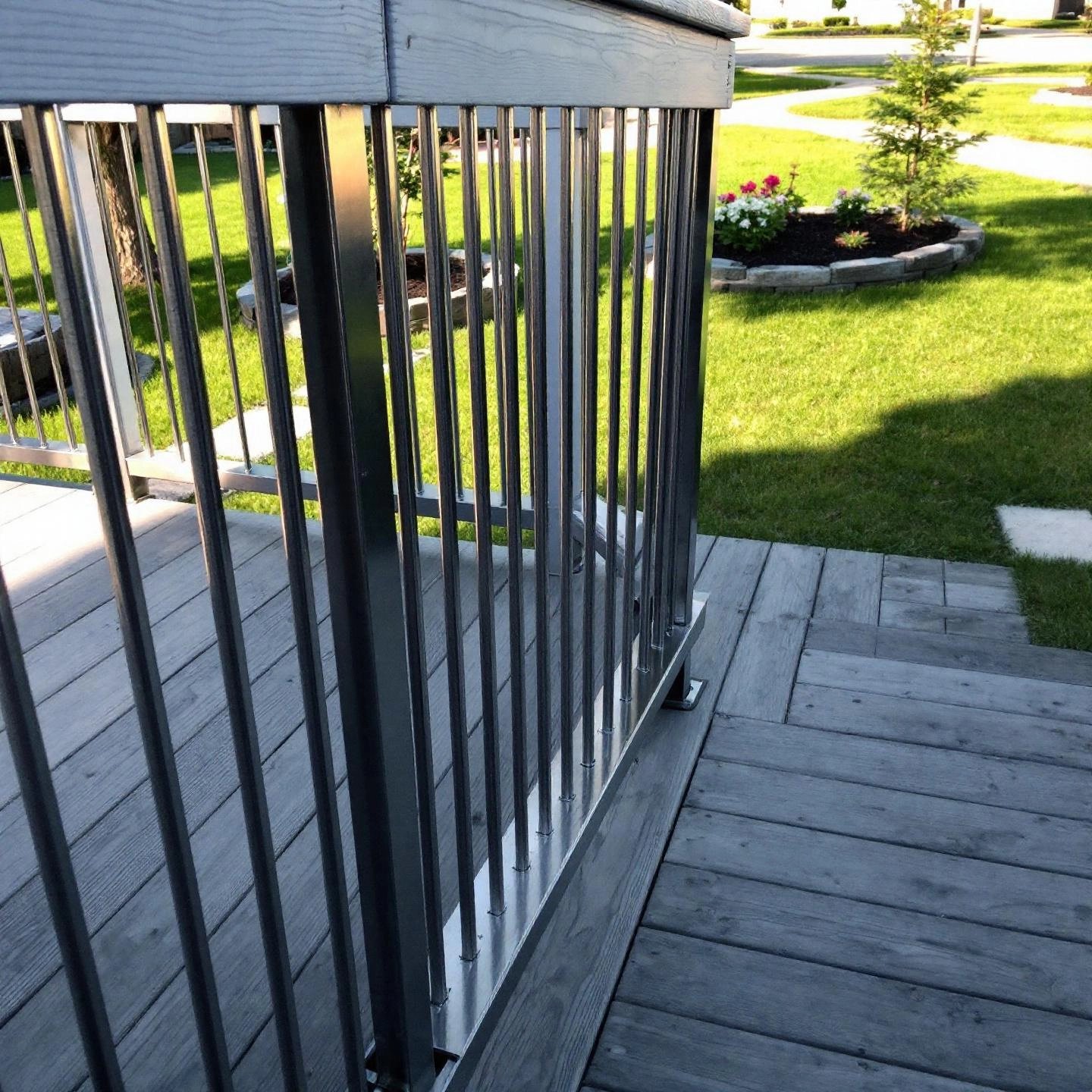
Ever wondered why some decks look effortlessly stunning while others feel disjointed or unfinished? The secret often lies in how well the railing system is designed—especially the integration of aluminum deck balusters with the rest of your deck. If you’re aiming for a space that’s both safe and visually harmonious, here’s what you need to know to get it right.
When you’re planning your deck railing with aluminum balusters, the first question is: Should you go all-in with aluminum, or mix materials for a custom look?
Safety is non-negotiable—and that’s where code-compliant spacing comes in. U.S. building codes require that the gap between balusters must be less than 4 inches, meaning a 4-inch sphere should not be able to pass through any opening. This rule is designed to keep children and pets safe and is a must for any professional or DIY installation.
Your top rail is more than just a finishing touch—it’s the anchor that ties your entire railing system together. When selecting a top rail for your aluminum deck system, consider:
Imagine a deck where every element—from the boards underfoot to the balusters and rails—shares the same high-performance DNA. By choosing a unified system, such as pairing aluminum balusters with premium aluminum decking like Shengxin's aluminum decking, you gain:
Key Takeaway: A well-integrated aluminum deck system not only enhances curb appeal but also delivers peace of mind—knowing your deck is safe, stylish, and built to last.
As you finalize your design, remember: thoughtful integration of materials, color, and spacing is what transforms a basic deck into an inviting, cohesive outdoor retreat. Next, let’s explore where to source quality balusters and railing components to bring your vision to life.
When you’re ready to buy aluminum deck balusters, the sheer range of choices can feel overwhelming. Should you head to a local big-box store, browse specialty suppliers, or search online? Let’s walk through the practical pros and cons of each option, so you can confidently source the right balusters for your project—whether you’re a homeowner taking on a weekend upgrade or a contractor managing a large-scale build.
Imagine you need materials fast, or you want to see and touch products before buying. That’s where big-box stores like Home Depot, Lowe’s, and Menards come in. You’ll find a variety of aluminum deck balusters Home Depot and aluminum deck balusters Lowe’s options, often in convenient packs sized for common deck projects.
Looking for something unique, or tackling a custom project? Specialty deck suppliers and dedicated online retailers might be your best bet. Here’s why:
| Source | Best For | Potential Drawbacks |
|---|---|---|
|
Big-Box Retailers (Home Depot, Lowe’s, Menards) |
|
|
|
Specialty Suppliers and Online Retailers |
|
|
For example, if you’re refreshing a small deck and want classic black balusters, big-box stores likely have what you need at a competitive price. But if you’re aiming for a distinctive look—like arched face-mount balusters in a custom finish—or you need to match existing railing, specialty suppliers or online retailers can provide the selection and expertise you need.
Ultimately, your best source depends on your project’s size, timeline, and design goals. Consider visiting a big-box store to see samples in person, then check specialty retailers online for expanded options and inspiration. As you finalize your purchase, remember that buying in bulk or seeking out contractor packs can help maximize value—an approach we’ll explore in detail next.
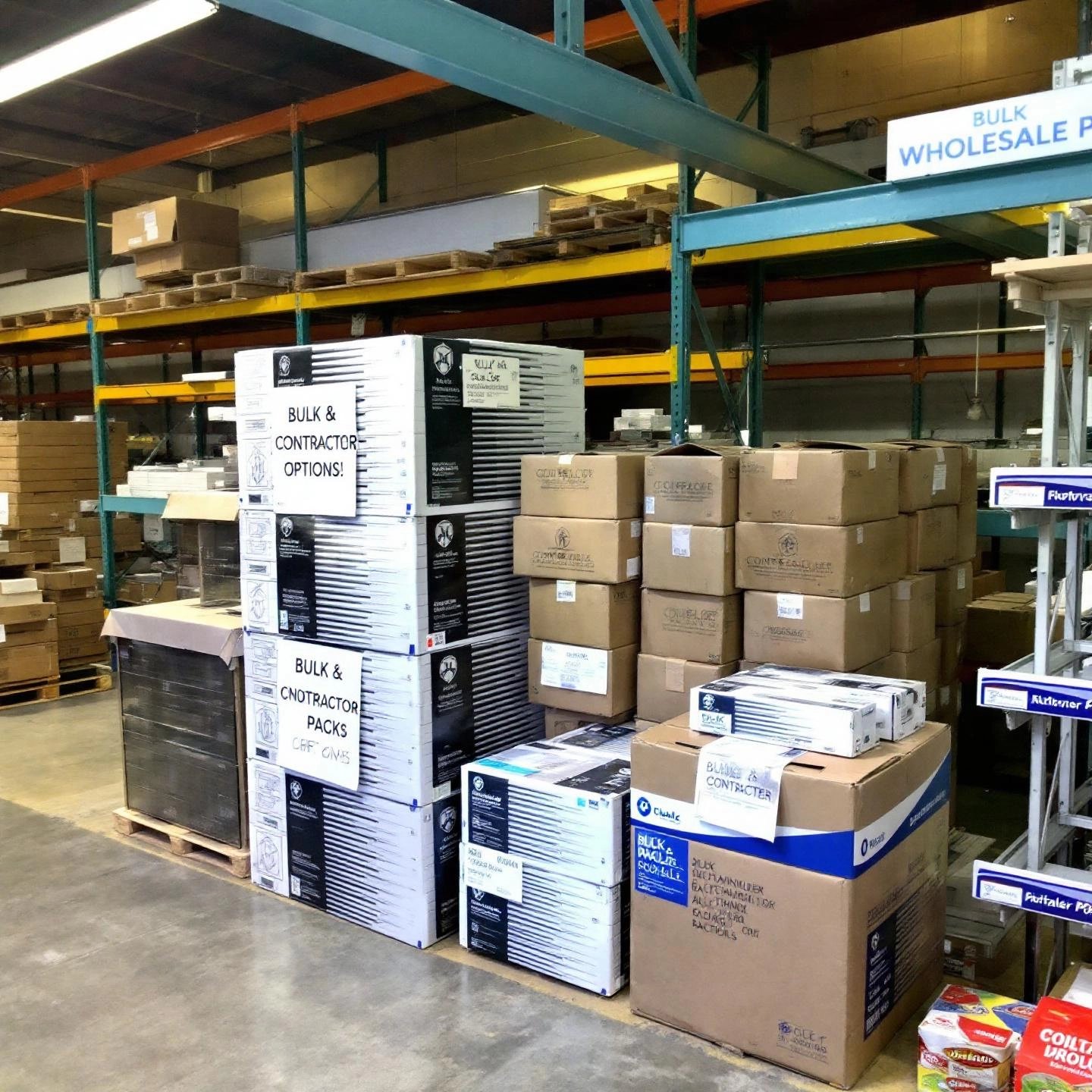
When you’re tackling a large deck project—maybe you’re a contractor outfitting a multi-level build, or a homeowner upgrading a sprawling outdoor space—every dollar counts. How can you save money without sacrificing style or quality? The answer often lies in smart, bulk purchasing strategies for aluminum deck balusters. Let’s break down the steps so you can stretch your budget and still achieve a professional, cohesive result.
Sounds complex? Not at all! Start by measuring the total linear footage of your railing. Most manufacturers recommend roughly 2.6 balusters per linear foot for standard spacing, but always check your local building codes and the specific product’s guidelines. Many suppliers offer handy online calculators—like Deckorators’ Baluster Calculator—to help you determine the exact number you’ll need based on your railing dimensions and the required 4-inch maximum spacing.
Once you know your quantity, it’s time to shop smart. Many brands, such as Deckorators, offer aluminum deck balusters 100 pack options for popular sizes and finishes. These larger packs typically provide a lower per-piece cost compared to buying smaller 10- or 20-packs. For example, 100-packs are available for certain finishes and lengths, such as 26-inch and 32-inch Gloss Black balusters—perfect for outfitting long runs of railing or multiple deck levels.
If your project is especially large—or you’re a contractor who regularly installs deck railings—consider purchasing wholesale aluminum balusters from specialty suppliers. Many companies, like Union Metalworks, offer extensive discount programs for contractors, volume buyers, and even return customers. These discounts can make a significant difference in your bottom line, especially when combined with affordable shipping and convenient online ordering.
Timing can be everything. Many retailers and online suppliers run seasonal promotions—especially during spring and summer, or around major holidays. Watch for sales on railing systems, bulk packs, or accessory bundles. Signing up for supplier newsletters or alerts can help you catch these deals before they’re gone.
Imagine the peace of mind that comes from knowing your bulk order is backed by consistent quality and expert support. For projects that demand both durability and aesthetic cohesion, sourcing directly from a professional manufacturer—such as Shengxin Aluminum—ensures you receive high-performance, color-matched components that are built to last. This is especially important when integrating balusters with premium aluminum decking or other architectural elements for a seamless, modern result.
Key Takeaway: Whether you’re a DIYer managing a backyard transformation or a contractor overseeing multiple installations, buying aluminum deck balusters in bulk is a practical way to maximize value and streamline your build. By calculating your needs carefully, leveraging contractor packs and wholesale pricing, and sourcing from reputable suppliers, you’ll create an outdoor space that’s as cost-effective as it is beautiful.
With your balusters sourced and your budget optimized, you’re ready for the final step: bringing everything together with a fully integrated, stylish, and long-lasting deck railing system. Let’s wrap up with a recap and a few final tips for success.
When you stand back and look at your deck, what do you want to see? A space that feels safe and inviting? A design that’s modern, cohesive, and built to last? Throughout this guide, we’ve covered everything you need to know about choosing aluminum deck balusters—from their standout durability to the diverse style and installation options that let you tailor your railing to your vision.
Imagine the impact of a fully integrated solution—a deck where your railing and surface share the same high-performance DNA. By pairing your balusters with a premium aluminum decking system, like those from Shengxin, you achieve:
Ready to take the next step? Whether you’re a homeowner seeking curb appeal, a contractor managing a large project, or a designer crafting a modern oasis, investing in quality aluminum deck balusters—and considering a unified aluminum decking system—sets your outdoor space apart. Explore your options, ask questions, and choose components that reflect your style and values. With the right choices, your deck will be a safe, stunning, and low-maintenance retreat for years to come.
Now it’s your turn: envision your ideal deck, review the tips and options covered in this guide, and confidently start your project. With aluminum, you’re not just building a deck—you’re investing in lasting beauty, safety, and enjoyment for your outdoor living area.
Aluminum deck balusters are highly durable, resist rust and corrosion, and require little maintenance—unlike wood, which can rot, warp, and needs regular painting or staining. Their sleek design also offers a modern look that fits both contemporary and classic decks.
While aluminum balusters usually have a higher upfront cost than wood, they save money over time due to their longevity and minimal maintenance needs. Wood may seem cheaper initially but often incurs higher long-term costs from repairs and upkeep.
Select baluster height based on local building codes—typically 36 inches for residential and 42 inches for commercial decks. Always ensure spacing between balusters is less than 4 inches to meet safety requirements and prevent accidents.
You can install aluminum deck balusters using face-mount or between-the-rail (infill) methods. Face-mount is easier for retrofits and decorative looks, while between-the-rail offers a seamless, traditional finish—choose based on your project and design preferences.
Major retailers like Home Depot and Lowe's carry standard packs, while specialty suppliers and manufacturers such as Shengxin Aluminum offer contractor packs, bulk discounts, and custom options, ideal for larger projects or unique design needs.
 บริการออนไลน์
บริการออนไลน์ 0086 136 3563 2360
0086 136 3563 2360 sales@sxalu.com
sales@sxalu.com +86 136 3563 2360
+86 136 3563 2360